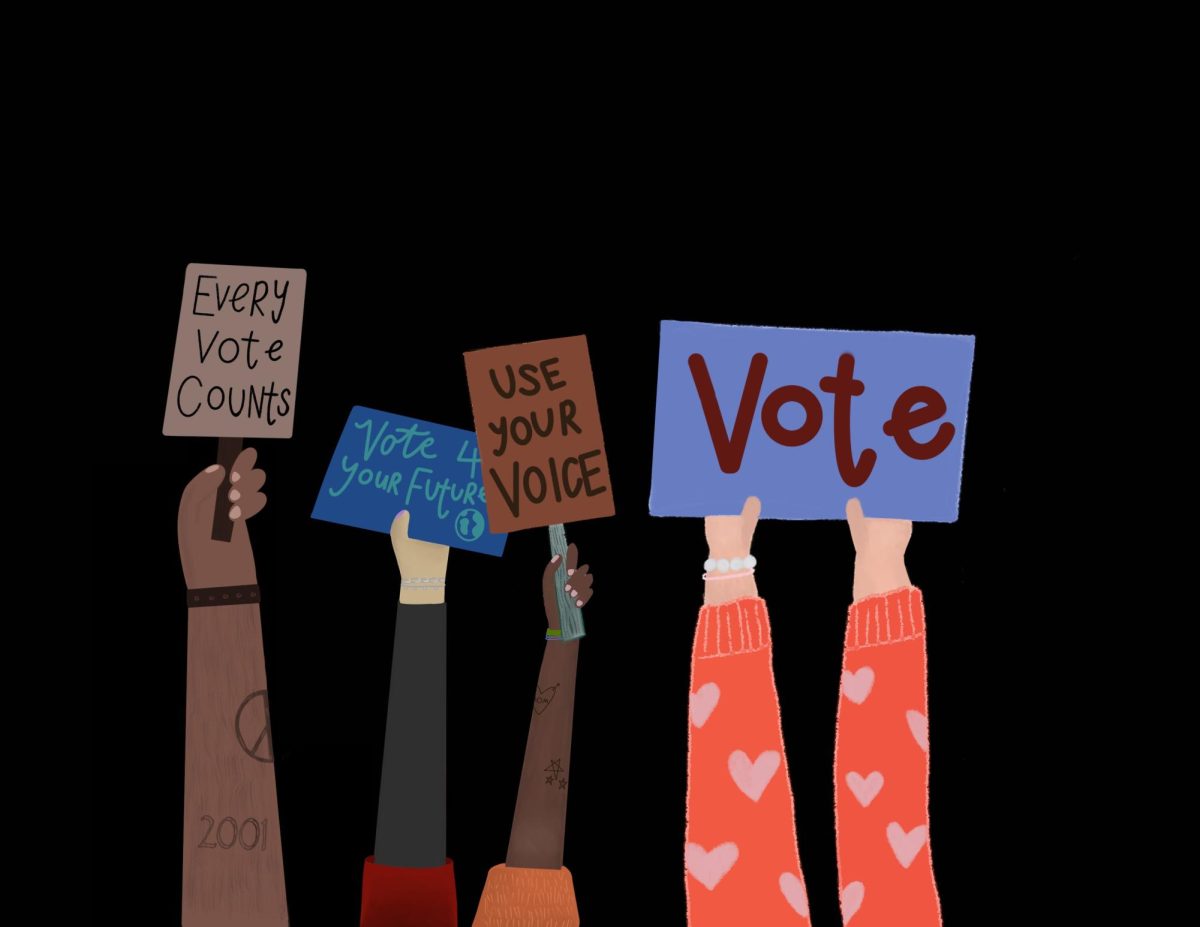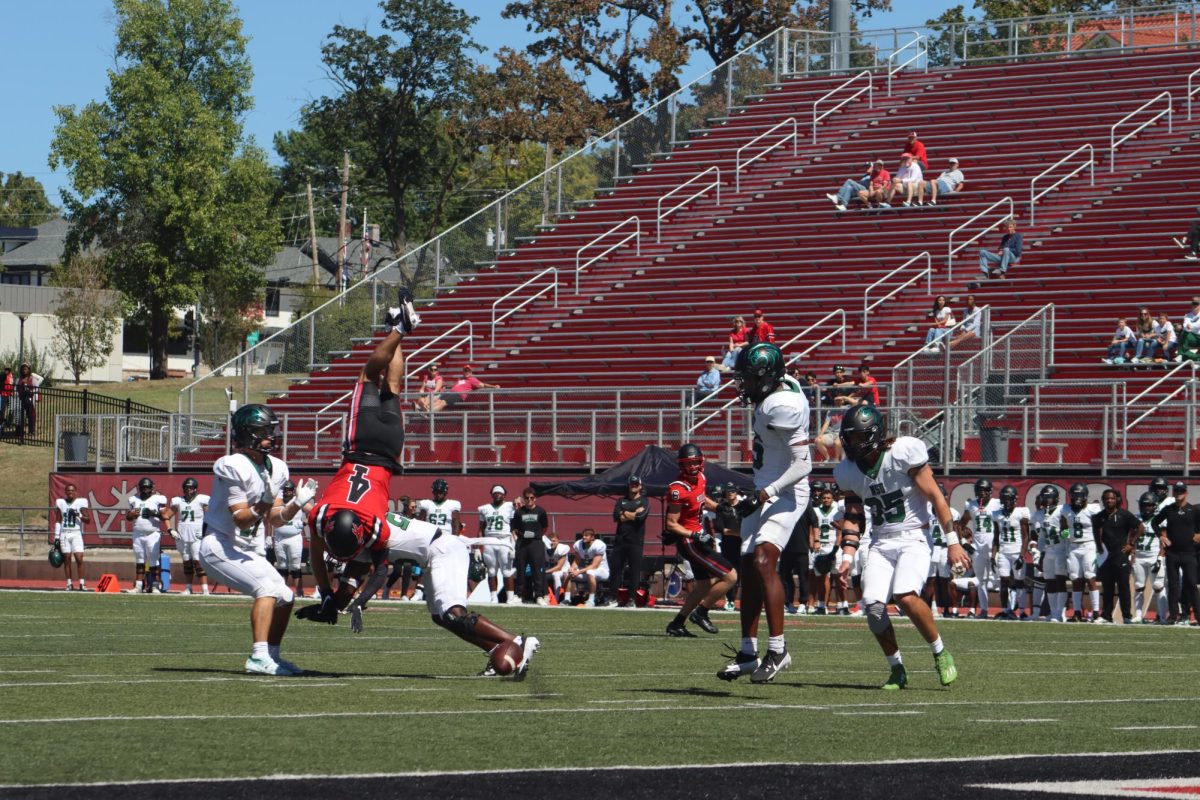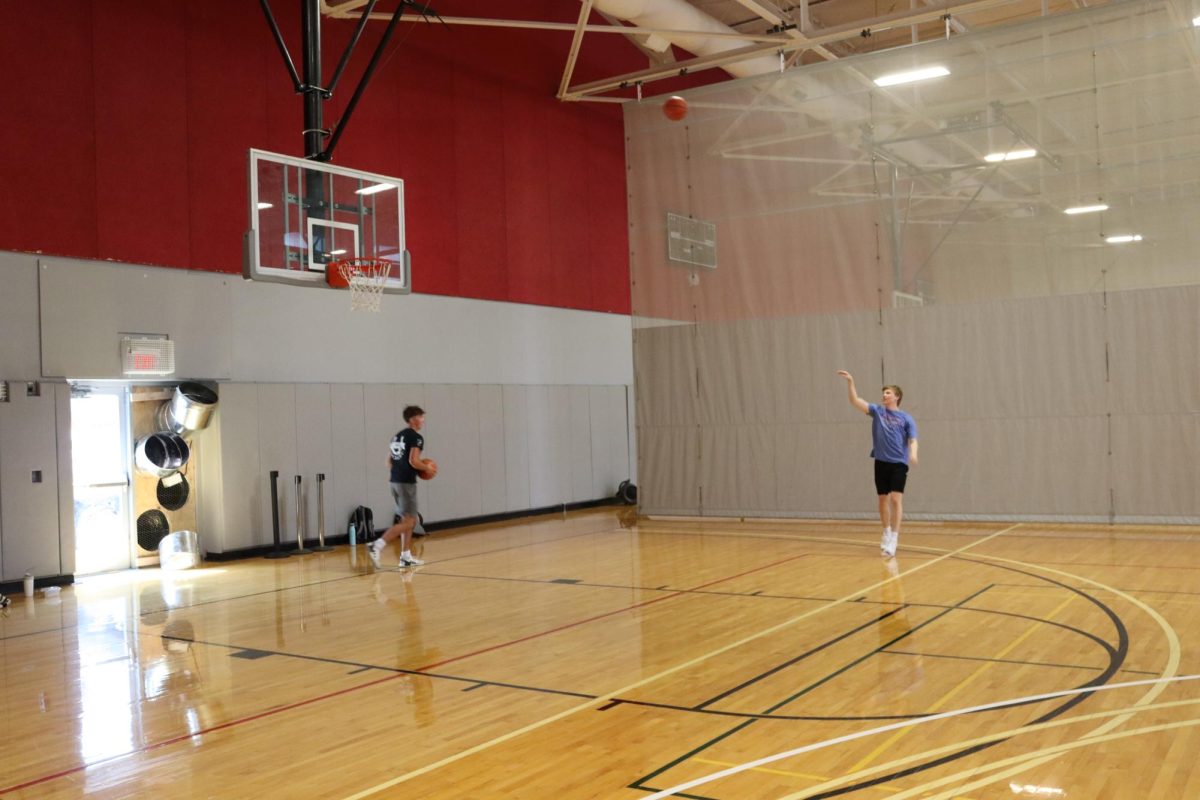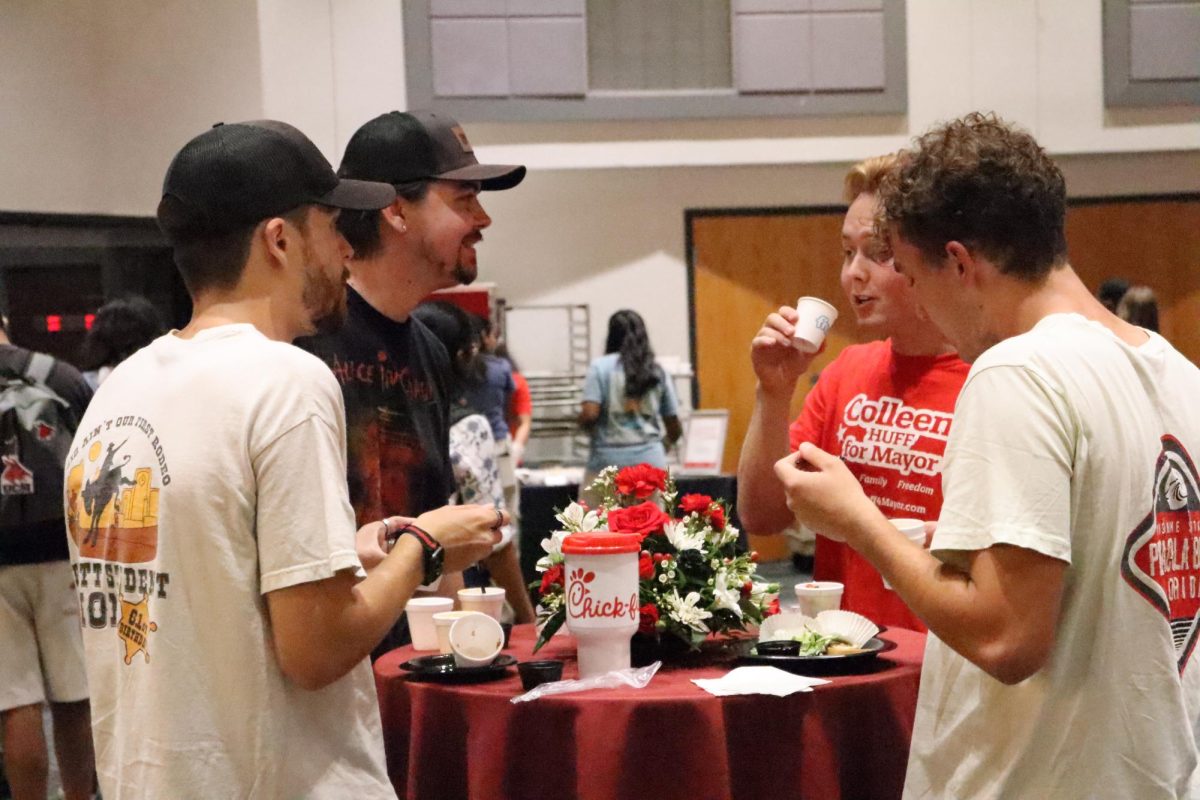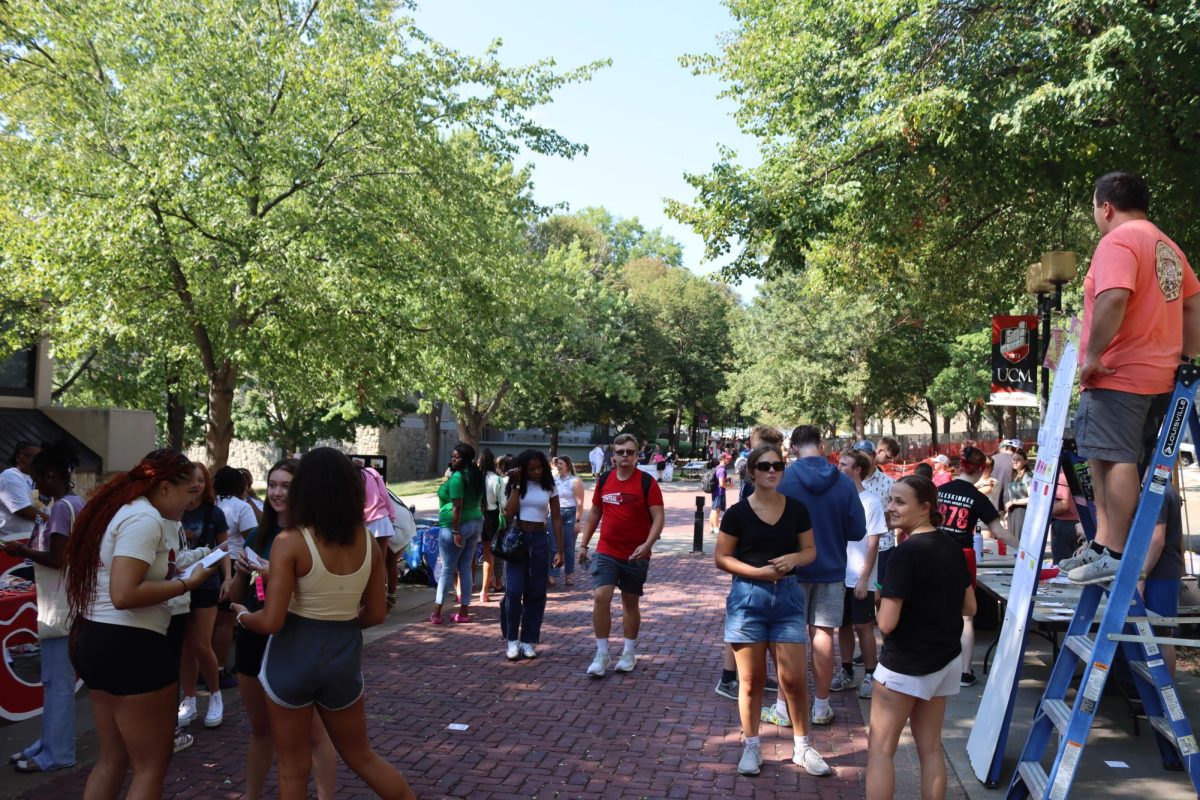Story by ANDY LYONS, News Editor—
Imagine drones flying around to inspect pipelines, manage crops and provide cell phone coverage during a natural disaster.
During a presentation Wednesday in the Union, Dr. Jerry LeMieux (Col. Ret.) highlighted these among other jobs that unmanned air vehicles are capable of doing.
As the Federal Aviation Administration prepares to give UAVs approval in American airspace by 2015, the opportunities are bountiful. UAVs, also known as remote piloted aircraft, come in over 10,000 designs of various shapes and sizes.
UCM currently offers one course in UAVs, which is Fundamentals of UAV/RPA Systems. The class was available this spring and will be again in the fall.
The aviation department is looking to continue expansion into UAV/RPA training to meet the future needs once the FAA approves their use.
“We hired a UAV pilot with appropriate educational credentials from Whiteman AFB to teach the class as an adjunct,” said Darren Smith, assistant professor of aviation. “Our first program we’re looking to create is a master’s degree in aviation, with an option in UAV/RPA systems. Shortly after that, we look to begin the process of adding an option to our undergraduate professional pilot degree in UAV/RPA Systems. This has already started with our new helicopter capability; we have already begun the process of adding an option to our professional pilot degree in helicopter.”
Tony Monetti, assistant dean of aviation, said that he views having a program specifically designed toward UAV piloting as necessary with the future job market.
“The FAA has indicated that UAVs will be integrated by 2015,” he said. “My hope is that we can get a master’s program done faster than that, in the next year instead of two to match the FAA. The accreditation process for a complete bachelor’s will take longer than that.”
Monetti also said that he hopes to work with LeMieux, who is the president of Unmanned Vehicle University in Arizona, to have a memorandum of understanding between both schools to bring more opportunities to UCM students.
“This partnership can help us be national or even global leaders in RPAs,” Monetti said.
LeMieux gave an hour-long presentation about the impact UAVs will have on the economy and highlighted some of the jobs that UAVs will be able to handle, or are already handling in countries without such strict laws on their airspace.
He highlighted the economic benefits, noting that UAVs will bring $13 billion and over 70,000 jobs within the first three years they are active.
He said that it would impact Missouri agriculture because there are around 109,000 farms in the state alone.
During the presentation, LeMieux highlighted the different sensors available for UAVs.
These include optical sensors for pictures and video, which provide surveillance, infrared, which can identify water content in plants and animals based on their heat signature, and hyperspectral, which use hundreds of infrared frequencies and are capable of detecting things such as fertile and non-fertile areas of crops and can detect pathogens in plants.
Most of these sensors are hand-sized and weight less than two pounds, so the UAVs needed to carry them can be quite small, especially when compared to the well-known Predator and Reaper drones used by the military.
LeMieux also curved his presentation toward current practices in the U.S. versus how other countries utilize UAVs to do jobs such as crop dusting. Japan has been using unmanned helicopter UAVs for crop dusting since 1990.
It’s been proven that the rotor wash helps pesticides get to the underside of plants and has much tighter turns compared to the small winged aircraft used by farmers, which is much more efficient.
In a demonstration done by the University of California-Davis that LeMieux used in his demonstration, an unmanned helicopter dusted a crop of grapes in six minutes, versus over an hour in a truck.
Other jobs that could be done by UAVs include inspections of wind turbines, power lines, bridges, roofs, power plant emission compliance, atmospheric sampling, geographical surveys, urban planning and cell phone tower line of sight analysis.
All of these jobs can be either dangerous or time consuming in their current practice.
Categories:
UAVs: the way of the future
Written by Muleskinner Staff
May 2, 2013
0

